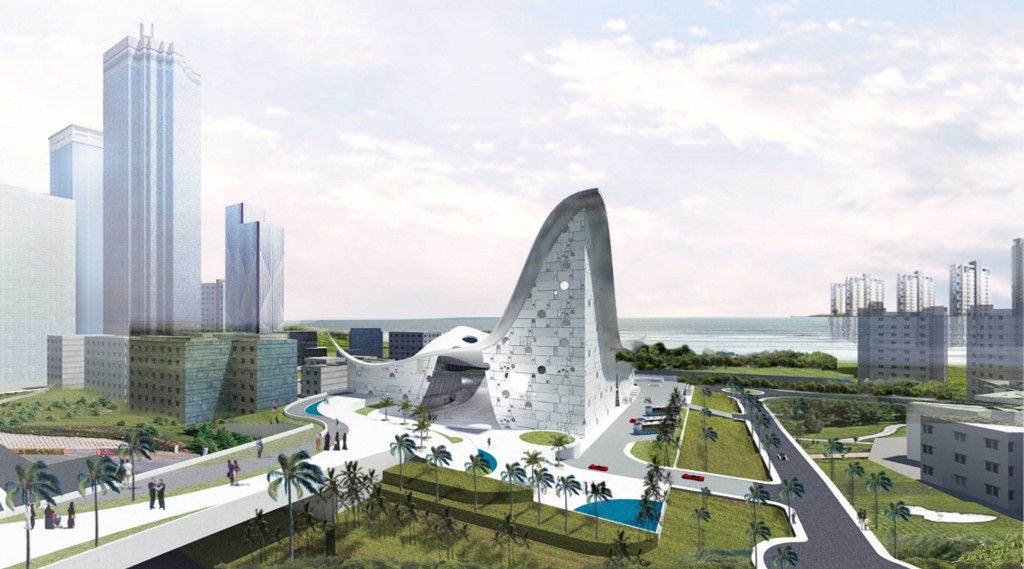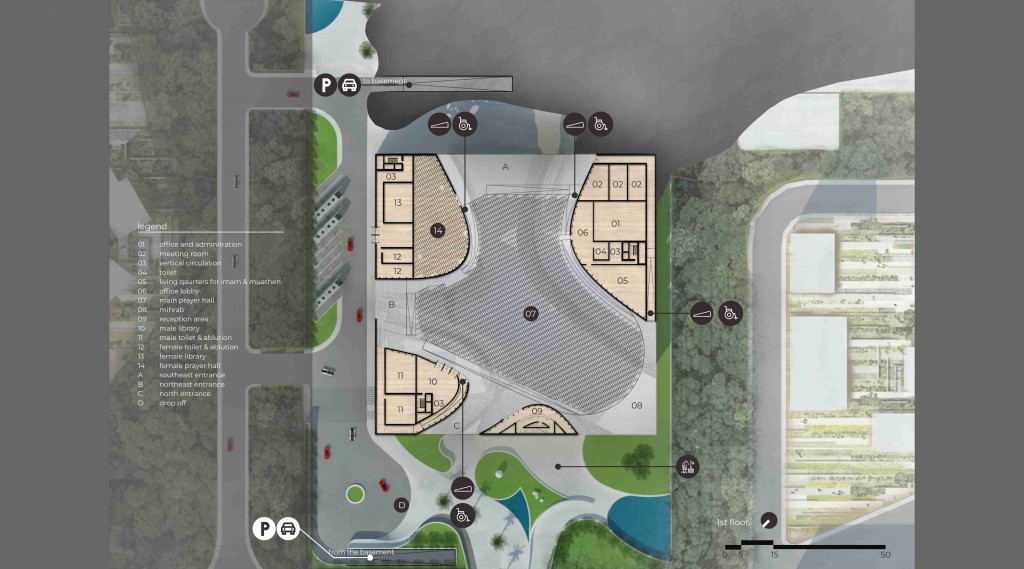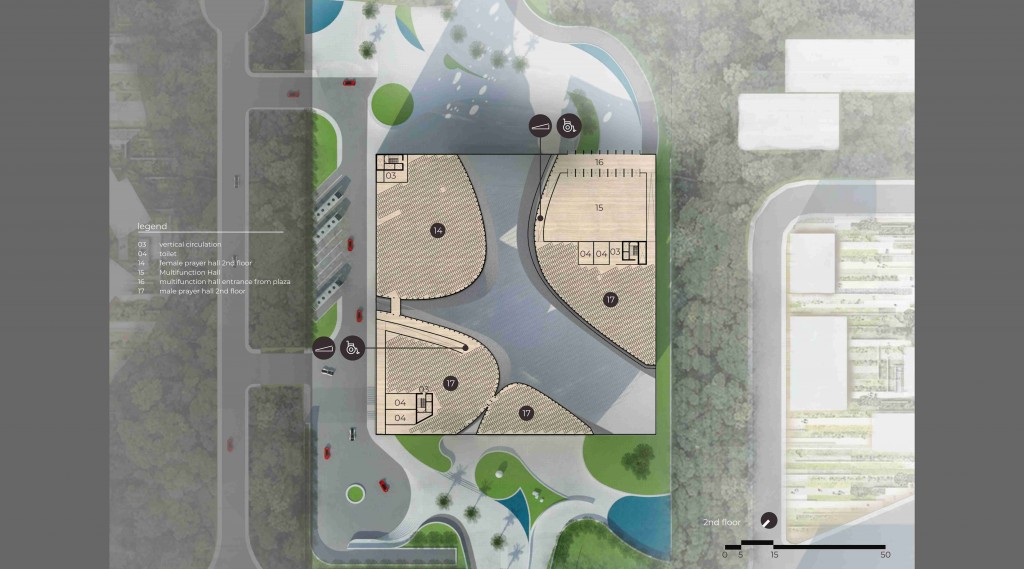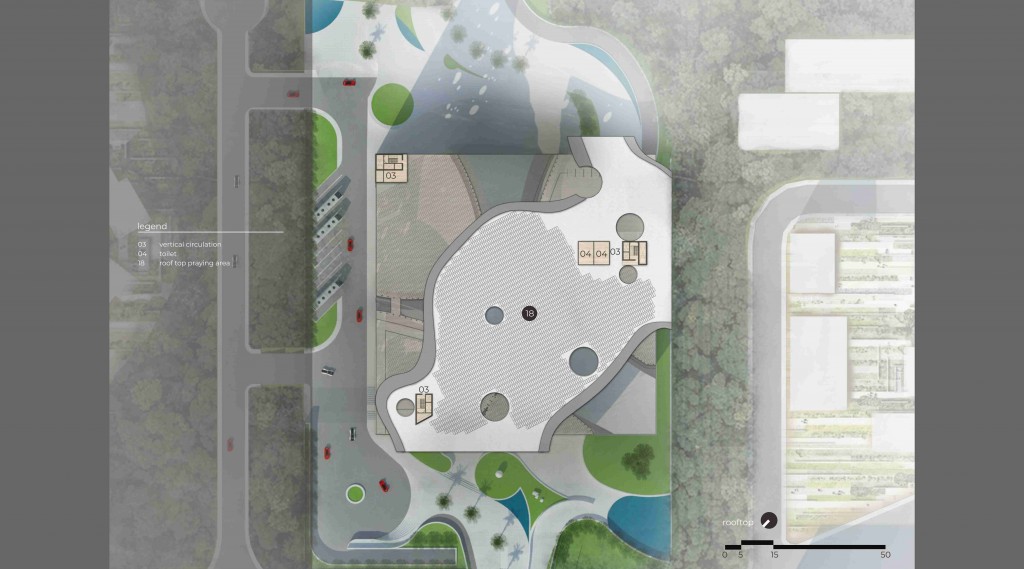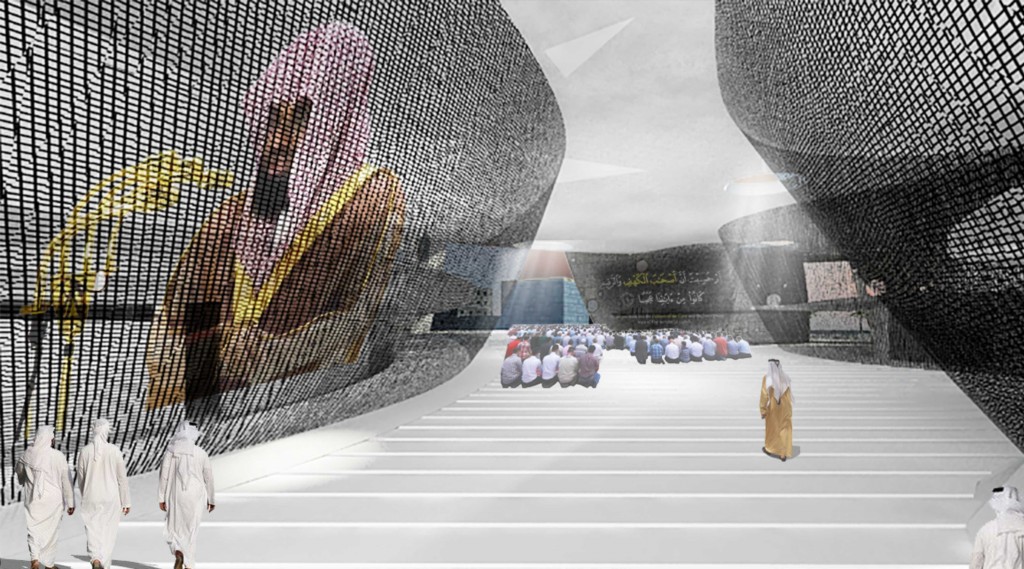Kahf. | Heterotopian Tent of Revelation and Epiphany
Architect
- Videshiiya
Location
Dubai Creek
Area
- -
Status
Proposal
Year
2018
Photorealistic 3D Images
- Gilang Rizki Fauzi Putra
Designers
- Niniek Febriany
- Stephanus Theo
- Reza Primardiantono
Prologue
Dubai has been praised for its diversity, with 15% of its population made up of UAE Nationals and approximately 85% comprising various foreign nationalities. Despite its strong Islamic cultural heritage, Dubai still allowed various religions to grow and build their place of worship. Both narratives symbolise Dubai’s openness and tolerance towards multi-religious society.
Dubai acceptance towards globalization has also positioned the city as one of the most influential city in the World (ranked 7th according to Forbes) and ranked 1st place for air connectivity. These bear testament to Dubai’s efforts to eliminate borders between nations and creating the perfect environment for global citizenry. This rapid achievement and massive boost in development however does not come without consequences.
Globalization has been the main culprit for drowning out local economies, leaving behind tradition and language. For Dubai, globalization is on the verge of reshaping and transforming its cultural and social identity.
Religious Architecture as Cultural Identity, Community Revolution, and Expression of 21st century Dubai
As a reflection of this modern-Dubai, the mosque as a religious building holds many important roles, not only as an expression of Dubai’s growth and development. It is also a trigger of many social activities and it promotes better understanding of Islamic teachings and their relevance among communities in modern era.
Deleuze’s notion of ‘affect’ interprets affection as a sensation that moves through human bodies, but not necessarily emerging from them. The power of ‘affect’ may originate from outside the human being, for example: a building.
Oskar Verkaik said that a building provides opportunities for process of identification within particular social context. We are being trained to to interpret and experience a building in a certain way, including the possibility of overwhelming us, and makes us look at ourselves and our communities in a renewed way.
Both anthropologist and philosopher suggested that religious architecture have the potential to provide and be the change itself, becoming the embodiment of a new social identity.
Kahf: Tent of Revelation and Epiphany
We envision to create a place of worship where a very specific community belongs to but still open to other communities, just like Islam itself. One only needs to look at the Quranic phrase Rahmatan Lil-’alamin; “a mercy to all creation”, a call towards togetherness, diversity, openness and tolerance to thrive further in Dubai.
The borderless site of the mosque, promotes openness and transparency as the green bridge circulation and axis from sanctuary park to creek plaza is preserved and maintained despite of qibla orientation.
The mosque is also envisioned to promote local heritage and tradition by transforming bedouin tent flexible and organic nature into roof surface form. This also function as an exoskeleton structure that surrounds main prayer hall, eliminating vertical structure and forming a cave-like space inspired by the place where Muhammad (PBUH) received the first Quran verse in Cave Hira.
Birgit Meyer argue that contemporary religion is not merely a mental and ethical engagement with religious doctrine, but a profound somatic, performative, and aesthetic commitment to the affective power of images, sound, and text on their beholder.
The exoskeleton will be covered with Mediamesh; a stainless steel wire mesh interwoven with LED lights that enhances performative environment of the building; celebrating 21st century technology and communication. Inversed amphitheater designed at the main prayer hall on the first foor explore the meaning of Islam as total submission to Allah and human willingness to surrender their life to Allah. Circles with various sizes and dimensions surrounds the facade, reminiscing the enigmatic crescent through movements. Such profound scheme proposes the materialization of a sacred space not only as mere container of the rituals, but as the physical manifestation of the ever-changing world outside and intrinsically, part of the ritual.
This structure and material also allow many kinds of artificial environment to be projected and, many kind of imagery to deepen one’s understanding of Islamic teaching and discussion be presented.





